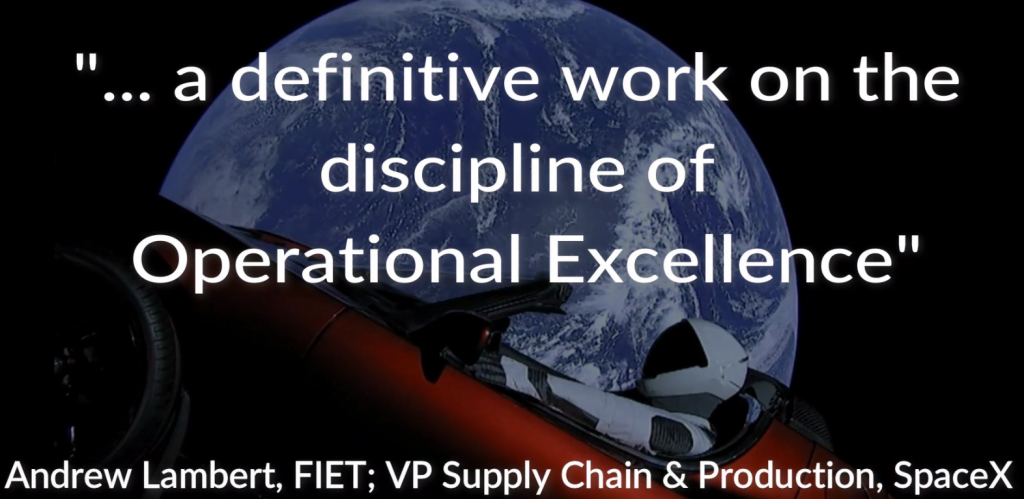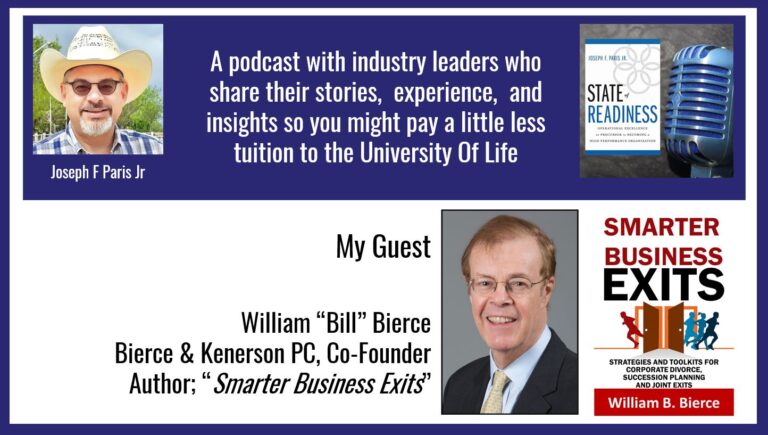Ready, Fire, Aim!
There is a saying, rather a curse; “May you live in interesting times”. It is a curse because interesting times are times that are full of Volatility, Uncertainty, Complexity, and Ambiguity; interesting times are VUCA times; disruptive, chaotic, and transformative.
Whereas life in uninteresting times is predicable, rote, even boring.
We are living in interesting times.
Over the past year, I have had conversations with countless continuous improvement professionals. To a person, they all lamented how their programs were cut-back to the bone or dissolved in their entirety.
Some claimed to have been involved in operational excellence, but they really were not. They were not trying to get their organizations to operation better as organizations; instead concentrating on vertical (process) optimizations over horizontal (system) integrations, organizational design, and accelerating the achievement of the organization’s vision.
I do a deep dive into why these efforts and those involved were killed-off in my article, “Eulogy of a Continuous Improvement Program”. In the article, I make the statement that the effected continuous improvement professionals and their programs were; “Not working on what was important. Not working on supporting the company vision or strategy. Not working to compress time. Now, just not working.”
And in a follow-up article entitled “Know what? So what,” I share the importance of looking beyond cost savings when quantifying the benefits of a program; and to be especially cautious in leading with cost savings as the highlight of the program when those cost savings might be so insignificant as to be a mere rounding error.
But over the last few months, there has been a definite change in the direction of the wind with regards to Operational Excellence and Continuous Improvement programs. Where the conversations I had been having were about cutting programs, now the conversations are about designing and deploying them (or redesigning and deploying as the case might be).
Some companies are looking for short-term transformations to reach some objective within a timeframe and some are looking long-term intending to put in a program that will (eventually) be the company’s business operating system. Most know what they want to achieve as an end-result; which is promising.
But in almost every case, the conversations have illuminated the perils that await.

The need for clear and concise communication: In most if not all conversations I have had, the single biggest challenge has been in determining and disseminating the message. So before we proceed further, we must spend a moment to discuss communication skills and the need to hone them.
Rule Nr.1 is to document everything. A mantra that I live by is; “If it’s not written, it does not exist.” I know it takes time and is sometimes painful, but only doom awaits if you don’t document your aspirations, intentions, and plans – and then share what has been written with those who are involved (in other words, everyone who will be affected or influenced by the plans as they are carried out).
Rule Nr.2 is be clear and concise as is possible. Avoid using any “MBA” words or creating a “word salad”. After all, the message must be understandable for everyone in the organization, wherever they may be located, and regardless of what their native language might be.
For example; What does the following mean and how could anyone understand it, much less align to it. If your communique sounds or reads like this, do better.
LostSoulsCo is the industry leader of cross-media six-sigma, long-term platforms. The metrics for EBCDIC are more well-understood if they are not world-class. We will visualize the power of functionalities to enhance our results as measured visa-vie a new set of KPI’s. It comes off as fabulous, but it's realistic! And it sounds estranging, but it's true! We will have a B2C2B plan for monitoring new biometrics. And we have come to know that if you revolutionize compellingly then you may also expedite intuitively. Accordingly, we pride ourselves not only on our bricks-and-clicks feature set, but our newbie-proof administration and simple operation. The metrics for bandwidth are more well-understood if they are not turn-key. And if you cultivate compellingly, you may have to redefine strategically. As a result, we will extend our capacity to reinvent without decrementing our power to synthesize. In a word, diversifying what is superfluous in favor of what is core.
Credit: Andrew Davidson and his Corporate Gibberish Generator
Suggestion; Have an outsider read it (maybe an adult child). If they don’t understand it, neither will the people who need to. Go back and rework it.
Setting a clear vision for the future: Although not a given, we have to assume that the C-Suite and Directors of the company have a vision for what the company will be in three to five years’ time. If this is lacking, then everything else will be a challenge. After all, how can you create strategies and tactics if you don’t know where you are going or what you will be.
Need to determine the success factors: I have never seen or heard of an Operational Excellence program fail. By that, I mean I have never heard a program make things worse off than before it was launched; there is always incremental improvement. But what I have seen are programs that failed to meet an expectation; or worse, that the expectations were not set to begin with (or set in only the most nebulous of terms).
Many of the companies with whom I have spoken have placed an emphasis on the required inputs without determining the desired outputs. They talk about the need for tools, or talent but when challenged as to what success looks like, they are far less detailed, and critically so. The risk is that they will not be working on what’s important to the business, only what they think might be important to the business.
Instead, what they really need to do is determine and agree on what success looks like. I like to do a little exercise; pretend your program and efforts are so successful that the local newspaper printed an “extra” edition of the newspaper in celebration of its success. What would the headlines read? What would some of the supporting stories be? Who would be noted in the articles and for what?
Establishing alignment: At this point, we have (hopefully) detailed what the vision of the future looks like and the success factors for measuring the level of its accomplishment. At this point, all of the stakeholders must agree that this is the case. Do not proceed if it is not. Instead, go back and rework the vision and success factors until there is alignment.
Create a plan: Once alignment has been established, and although a notional plan might have been created prior, it’s time to create the real plan that details roles, responsibilities, resources required (what, where, when, and at what cost), and the milestones and waypoints to measure progress.
If your plan spans multiple years, only the present year should be fully detailed with subsequent years being less detailed. The reason for this is that, in all my experience, there has never been a plan that was on-time, on-budget, and met all the deliverables. Therefore, subsequent years should be detailed to the extent that the major objectives are identified and the hand-off from year to year is prepared for; much like runners in a relay race.
Gaining commitment: Alignment should be reaffirmed between and amongst the stakeholders and leadership once the plan is created. Having achieved reaffirmation, demonstrable commitments should be made; leadership to support the plan in a meaningful way so that it is unmistakably so (funding, resources, and so on) as well as those who are responsible for the execution of the plan.
Getting everyone else on board: For the plan to be successful will require the support of those who were not involved in its development; the rank and file. To be successful here, not only will you have to “sell” the plan to those everyone who will be instrumental in its being successful, but they will have to “buy” into the plan.
To accomplish this will require two critical components.
First, you must package it simply, using the most basic language in as few words as is possible. Take the time to distill it down for everyone’s sake and for the sake of the plan. You must understand it well enough and you have to be able to demonstrate that you do. If you don’t or can’t do this, the chances of on-boarding others are as close to nil as is possible. As Albert Einstein said, “If you can’t explain it simply, you don’t understand it well enough.”
Second, you need to demonstrate that there is a direct benefit to the participants; that they will directly and personally benefit in a tangible manner from engaging. Their being able to know their own “What’s In It For Me” (WIIFM) will at least present the opportunity for people to come onboard with the program and its efforts. If you present in the abstract, or for the “benefit of the company”, the chances are great that people will not come on-board and, in fact, might become resistant.
Periodically level-set the program: As your program roll-out is happening, make sure to hit the milestones and waypoints. Nothing will jeopardize a program faster than having it (or those leading it) called into question. To avoid this peril, be sure that the expectations set are reasonable. Remember, for most people involved, this is only a part-time additional role. And there are not too many people I know who are working that have a lot of extra time on their hands, so make sure that you properly balance the workload so that the expectations can be met in the time required.
Since the program spans multiple years, formalize a program auditing process to measure the actual progress against the plan and to ensure the program objectives are still valid. After all, business factors are dynamic and ever-changing; and these changes will cause a redirect or a reprioritization of efforts. We need to ensure we are always working on what’s important.
A simple way of determining what might have changed and what is important is if what the senior leaders of the organization are working on has changed. This is doubly-true if there is a change in the senior leadership. You can almost be certain that there will be a change in strategy that soon follows, and this will precipitate a change in direction of what is needed of your program. Be sure to be leading and not lagging in these efforts; be proactive, understand what the new strategy might be, and make the necessary adjustments accordingly.
“Fail to plan, plan to fail.” – Benjamin Franklin
If you do the hard work upfront along the lines I have outlined in this article, you will be on the road to success. Done well, properly communicating, and gaining the alignment and commitment before you start will make the actual roll-out of your program almost anticlimactic. And putting protocols in place to capture changes in the business factors and the resultant strategies will help to ensure your program is, and remains, the strategic force multiplier it has the potential to be.
About the author
Paris is an international expert in the field of Operational Excellence, organizational design, strategy design and deployment, and helping companies become high-performance organizations. His vehicles for change include being the Founder of; the XONITEK Group of Companies; the Operational Excellence Society; and the Readiness Institute.
He is a sought-after speaker and lecturer and his book, “State of Readiness” has been endorsed by senior leaders at some of the most respected companies in the world.
Click here to learn more about Joseph Paris or connect with him on LinkedIn.








